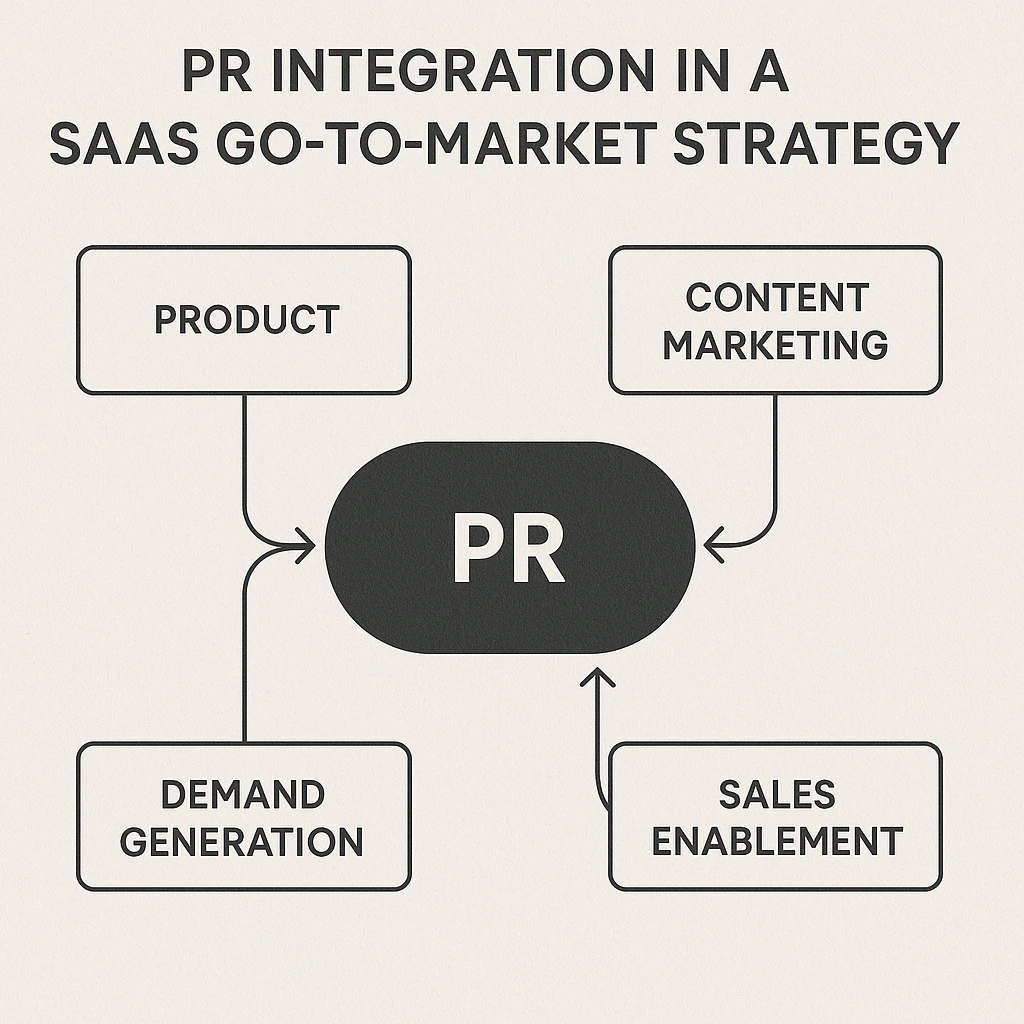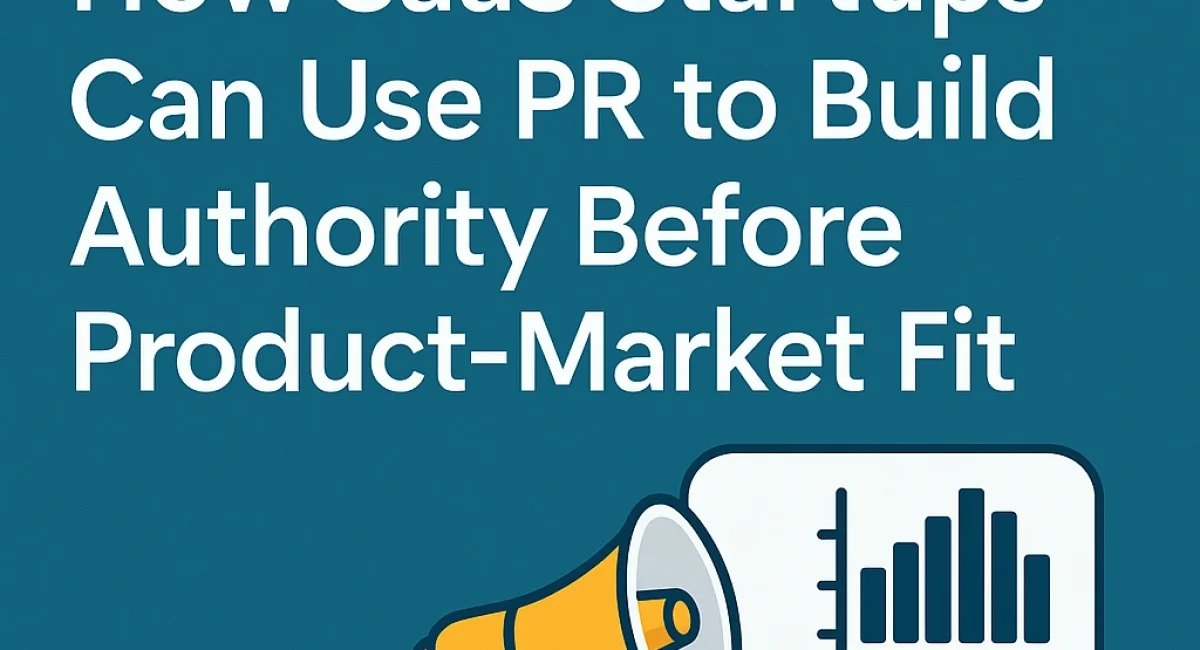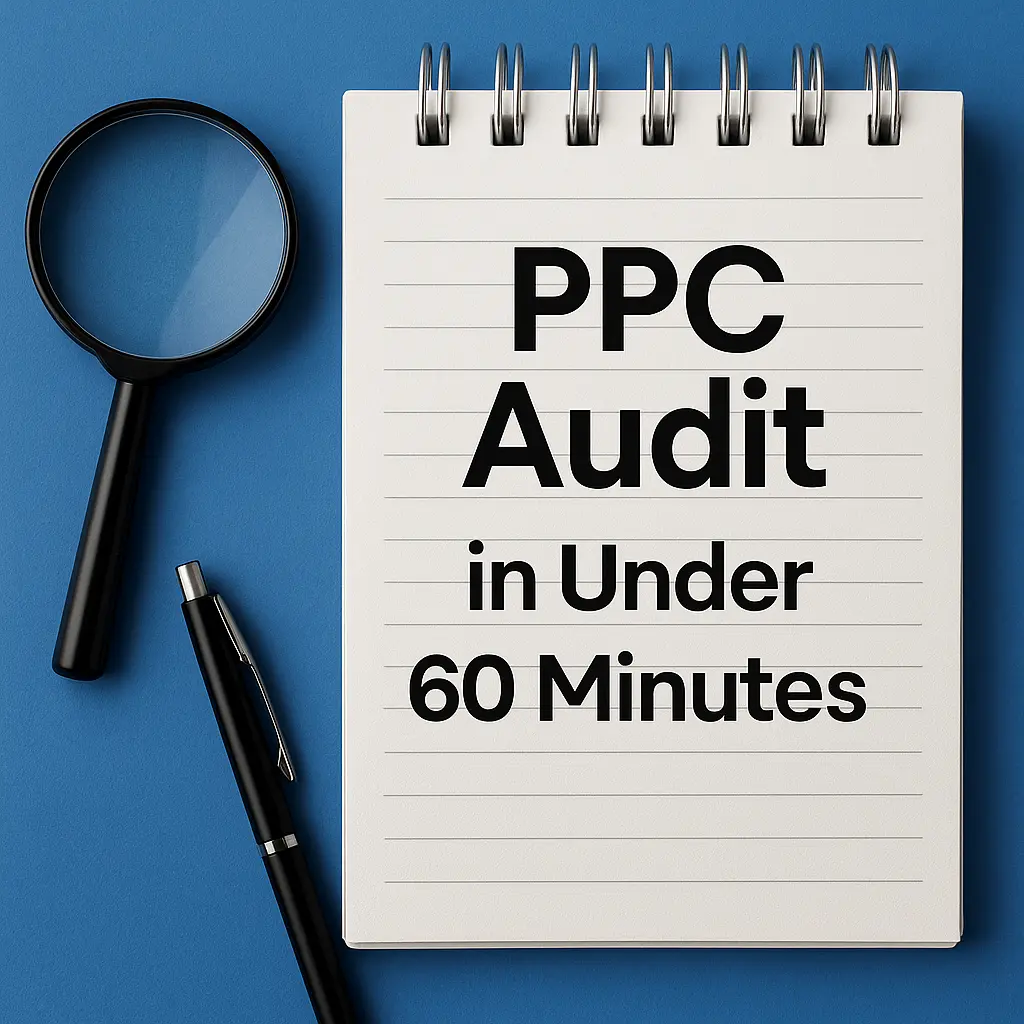Table of Contents
The SaaS Startup Challenge: Building Trust Before Product-Market Fit
In the high-stakes world of SaaS startups, finding product-market fit (PMF) is the ultimate goal. But what happens when you’re still iterating on your product, testing hypotheses, and refining your value proposition? Early-stage SaaS companies often face a credibility gap—potential customers, investors, and partners hesitate to engage with an unproven solution. This is where strategic public relations (PR) comes into play, acting as a trust-building engine to boost startup visibility and establish authority even before PMF is achieved.
Unlike mature businesses with established track records, early-stage SaaS firms must rely on perception to drive interest. A well-executed SaaS PR strategy can position a startup as a thought leader, attract early adopters, and create a foundation for future growth. This article will guide you through actionable steps to leverage PR effectively, providing frameworks, examples, and tools to navigate the pre-PMF stage with confidence.
Why PR Matters for SaaS Startups Before Product-Market Fit
Public relations is often misunderstood as a tool for vanity metrics—chasing logos in top-tier publications for the sake of prestige. However, for an early-stage SaaS company, PR is far more than a badge of honor. It’s a strategic lever to build trust, amplify reach, and validate your vision in the eyes of stakeholders.
Establishing Credibility in a Crowded Market
The SaaS landscape is fiercely competitive, with thousands of startups vying for attention. Without a fully baked product, credibility is your currency. Media coverage, even in niche outlets, signals that your startup is worth noticing. It provides social proof to potential users who might otherwise dismiss an untested solution.
Attracting Early Adopters and Feedback
Pre-PMF startups need feedback loops to iterate quickly. Strategic startup PR can help you reach innovators and early adopters who are willing to test your product and provide insights. A single mention in a relevant industry blog can drive sign-ups from curious users eager to experiment with new tools.
Building a Narrative for Investors
Investors look for traction and vision. While you may lack hard metrics before PMF, a strong PR presence can demonstrate momentum. Stories about your mission, team, or unique approach in reputable publications can make your pitch deck more compelling, showing that the market is paying attention.
Media Targeting Strategies for Early-Stage SaaS
Not all media outlets are created equal, especially for a pre-PMF startup with limited resources. A scattershot approach to tech media coverage wastes time and dilutes impact. Instead, focus on targeted outreach that aligns with your niche and audience.
Identify Your Core Audience
Start by defining who you’re trying to reach. Are you targeting small business owners, enterprise IT managers, or developers? Understanding your ideal customer profile (ICP) will guide where to seek coverage. For instance, a B2B SaaS targeting SMBs might prioritize outlets like Small Business Trends, while a developer-focused tool could aim for Hacker News or Dev.to.
Prioritize Niche Over Mass Appeal
Early on, niche publications and communities often yield better results than broad outlets like TechCrunch or Forbes. Industry-specific blogs, podcasts, and newsletters have highly engaged audiences and lower barriers to entry. Use tools like BuzzSumo to identify relevant outlets and journalists covering your space.
Build a Tiered Media List
Organize your media targets into tiers based on reach and relevance. Here’s an example framework:
| Tier | Type of Outlet | Examples | Goal |
|---|---|---|---|
| Tier 1 | Niche Blogs & Communities | IndieHackers, SaaStr | Build targeted credibility |
| Tier 2 | Industry Trade Publications | MarTech, HR Tech Europe | Reach decision-makers |
| Tier 3 | Mainstream Tech Media | TechCrunch, VentureBeat | Amplify broader awareness |
Start with Tier 1 to build momentum and refine your messaging before approaching larger outlets.

Crafting Pitches That Resonate Without Overhyping
One of the biggest challenges for pre-PMF startups is pitching a story when your product isn’t fully formed. Journalists are wary of fluff and empty promises, so your pitch must focus on value and authenticity rather than unproven claims.
Lead with Your Vision or Problem-Solving Approach
Instead of hyping a half-built product, share the problem you’re solving and why it matters. Frame your startup as part of a larger trend or movement. For example, if you’re building a remote work tool, tie your story to the rise of distributed teams and hybrid workplaces.
Highlight the Founders’ Expertise
Early-stage stories often center on the team. If you or your co-founders have unique experience or a compelling backstory, make it the hook. Journalists love human-interest angles, like overcoming challenges or pivoting from a previous venture to solve a personal pain point.
Offer Data or Unique Insights
Even without a polished product, you can contribute value through data or thought leadership. Conduct a small survey among your target audience or share observations from your beta testers. Data-driven pitches are more likely to grab attention in the crowded tech media coverage space.
Avoid Overpromising
Be transparent about your stage. Phrases like “revolutionary” or “game-changing” without evidence can backfire. Instead, use language like “we’re working to” or “our early users have seen” to set realistic expectations.
Integrating PR into a Broader Go-to-Market Framework for SaaS
PR shouldn’t operate in a silo. For early-stage SaaS companies, it must align with your broader go-to-market (GTM) strategy to maximize impact. Here’s how SaaS PR fits into key GTM components.
Driving Website Traffic and Lead Generation
Media mentions can funnel curious readers to your website. Ensure your landing page is optimized for conversions, with clear calls-to-action (CTAs) like signing up for a waitlist or joining a beta program. Use tools like Google Analytics to track referral traffic from PR efforts.
Supporting Content Marketing
Amplify PR wins through your own channels. If you’re featured in a publication, repurpose the coverage into blog posts or social media snippets. This builds on the initial exposure and reinforces your authority.
Complementing Community Building
Pre-PMF startups often rely on communities for validation. Use PR to establish credibility within niche forums like Reddit’s r/SaaS or Slack groups. Share your media coverage to spark discussions and attract potential users.
For a deeper dive into GTM strategies, check out this resource from SaaStr, which offers actionable insights for SaaS founders.

Real-World Examples of Successful Pre-PMF PR Campaigns
Learning from others’ successes can inspire your own startup PR efforts. Here are three early-stage SaaS companies that used PR effectively before finding product-market fit.
Buffer: Transparency as a PR Hook
Before Buffer became a household name in social media management, its founders leaned heavily on transparency. They blogged openly about revenue, challenges, and even salaries, earning coverage in niche blogs like Lifehacker. This built trust with early users and positioned Buffer as a relatable underdog.
Superhuman: Cultivating Exclusivity
Superhuman, an email productivity tool, created buzz pre-launch with an invite-only model. They pitched stories about their obsessive focus on speed and user experience, landing features in outlets like The Verge. This exclusivity drove demand and feedback from early adopters.
Calendly: Solving a Universal Pain Point
Calendly started as a simple scheduling tool but gained traction through founder stories. Tope Awotona’s journey of bootstrapping the company resonated with media, leading to early coverage in startup-focused outlets like Entrepreneur. This helped Calendly attract users before scaling features.
Tools to Manage PR for Early-Stage SaaS Startups
Founders often wear multiple hats, and PR can feel overwhelming without the right tools. Fortunately, several affordable platforms can streamline your early-stage SaaS communication efforts.
Media Databases and Outreach
- Cision: A comprehensive database to find journalists and track coverage. Learn more.
- Muck Rack: Great for identifying reporters and sending personalized pitches. Ideal for startups on a budget.
Press Release Distribution
- PRWeb: Affordable distribution to get your announcements in front of relevant outlets.
- EIN Presswire: A cost-effective option for global distribution with analytics.
Monitoring and Analytics
- Google Alerts: Free and simple way to track mentions of your brand or keywords.
- Mention: Tracks media and social mentions, offering insights into PR impact.

Avoiding Common PR Pitfalls for Pre-PMF SaaS Startups
While PR offers immense potential, mistakes can damage your credibility. Here are pitfalls to avoid as you build startup visibility.
Overpromising Results
Claiming your product is “the best” without data can lead to skepticism. Focus on what’s verifiable, like user feedback or small wins, rather than grand statements.
Ignoring Audience Fit
Pitching to irrelevant outlets wastes effort. A feature in a general lifestyle magazine might not move the needle if your audience is enterprise IT buyers. Stay laser-focused on your ICP.
Neglecting Relationships
PR is about building long-term connections with journalists, not one-off wins. Follow up politely, offer value, and avoid spamming. Tools like Hunter.io can help find contact details for personalized outreach.
Conclusion: Laying the Foundation for Long-Term Success with PR
For early-stage SaaS startups, PR is not a luxury—it’s a necessity. By focusing on strategic SaaS PR, you can build authority, attract early adopters, and create a narrative that resonates with investors and customers, all before achieving product-market fit. From targeting the right media outlets to crafting authentic pitches and integrating PR into your go-to-market strategy, the steps outlined in this article provide a roadmap for success.
As the SaaS ecosystem continues to evolve, the ability to stand out early will become even more critical. Startups that invest in thoughtful PR now will reap the benefits of trust and visibility when scaling later. So, start small, stay authentic, and let your story pave the way to validation and growth. The journey to PMF is long, but with the right startup PR approach, you’ll have a powerful ally to help you get there.
Need more information? Reach out to us for a free consultation call here.
How much should an early-stage SaaS startup budget for PR activities?
Early-stage SaaS startups typically allocate 10-15% of their marketing budget to PR activities, though this varies based on growth stage and industry. According to a 2023 survey by Propel, pre-PMF startups spend an average of $2,000-$5,000 monthly on PR when handling it in-house, while agency retainers start at $5,000-$10,000 monthly.
Many successful early-stage startups begin with founder-led PR efforts, focusing on relationship building and targeted pitching rather than expensive tools or services. Buffer, for example, spent virtually nothing on PR in their early days, instead investing time in content creation and transparent communication.
The most cost-effective approach is to start with free tools like Google Alerts, HARO (Help A Reporter Out), and targeted media lists you build yourself. As you gain traction, you can gradually increase spending on paid tools like Muck Rack or Mention to scale your outreach efforts.
How do you measure PR success for a pre-PMF SaaS startup?
For pre-PMF SaaS startups, PR success metrics should focus on building awareness and credibility rather than direct revenue attribution. Key metrics to track include:
Referral traffic: According to Semrush data, media mentions can drive 30-50% increases in website traffic when properly leveraged. Monitor Google Analytics to see which publications send the most engaged visitors.
Lead generation: Track how many waitlist sign-ups, demo requests, or beta users come directly from PR mentions. Early-stage startups typically see conversion rates of 1-3% from PR-referred traffic.
Backlink quality and domain authority: Media coverage often provides valuable backlinks, with tech publications typically having domain authority scores of 60+, which significantly helps SEO efforts.
Stakeholder feedback: Measure qualitative wins like investor mentions (“I saw you in TechCrunch”) or sales conversations that reference media coverage. A 2022 Edelman Trust Barometer study found that 61% of decision-makers need to see a company mentioned in trusted media before considering them.
At this stage, focus less on vanity metrics like reach or impressions and more on engagement quality and how PR accelerates relationship-building with key stakeholders.
How frequently should a pre-PMF SaaS startup aim to secure media coverage?
Quality trumps quantity for pre-PMF startups. Data shows that consistent, relevant coverage in targeted outlets delivers better results than sporadic appearances in high-profile publications. Most successful early-stage SaaS companies secure 1-2 quality media placements monthly rather than pursuing aggressive coverage.
According to Muck Rack’s 2023 State of PR report, journalists receive 50-100 pitches daily but write only 3-5 stories per week, making competition fierce. Focus on meaningful coverage that reaches your specific audience rather than chasing volume.
A strategic approach is to time your media outreach around key milestones: funding announcements, product launches, or significant partnerships. Between these moments, build relationships by offering thought leadership through contributed articles or expert commentary on industry trends.
Consistency is key—aim for quarterly feature pieces in tier 1 publications within your industry vertical, supplemented by monthly mentions in tier 2-3 outlets. This cadence helps maintain visibility without exhausting your story angles or burning media relationships.
Should pre-PMF startups hire a PR agency or handle PR in-house?
This decision depends on your specific circumstances, but data suggests most successful pre-PMF startups begin with founder-led PR before transitioning to external support. A 2022 FirstRound Capital survey found that 78% of founders at early-stage startups handled their own PR until reaching $1M in ARR.
In-house PR advantages include authenticity (journalists prefer hearing directly from founders), cost efficiency, and deeper product knowledge. The disadvantages include time constraints and potential lack of media relationships.
Consider hiring an agency or consultant when you have a clearly defined ICP, messaging that resonates with early users, and sufficient funding (typically post-seed). Agencies typically charge $5,000-$15,000 monthly but bring established media relationships and strategic guidance.
Many startups find success with a hybrid approach: founders handle thought leadership and relationship building while engaging freelance PR specialists ($1,500-$3,000 monthly) for media list development, pitch writing, and outreach coordination. This approach delivered 3x better results than full DIY efforts according to a Startup Runway Foundation report.
Whichever route you choose, ensure your PR representative thoroughly understands your technology, audience, and industry landscape.
What types of stories work best for pre-PMF SaaS startups trying to get media coverage?
Pre-PMF startups should focus on story angles that don’t rely on proven product success. According to Muck Rack’s journalist survey, these story types have the highest success rates for early-stage companies:
Founder journey narratives: Personal stories about why you started the company or overcame challenges resonate strongly. Articles featuring founder backstories receive 47% more engagement than general company news.
Trend-focused content: Position your startup within larger industry shifts. For example, a remote work tool might pitch a story about workplace transformation trends, with the founder as an expert source. These stories have a 3x higher acceptance rate from journalists.
Original research and data: Even small startups can conduct surveys or analyze their beta user data. Content with proprietary data gets 35% more media pickups than standard announcements.
Pain point analysis: Stories that deeply examine the problem you’re solving often succeed even when your solution is still developing. Journalists are 2.5x more likely to cover a startup that articulates a compelling market pain point.
Funding announcements: While not always applicable, seed or angel investment news provides a natural news hook. 62% of tech journalists report regularly covering early-stage funding rounds, even for small amounts.
The key is positioning your startup as part of a larger narrative rather than making the story solely about your product.
How can SaaS startups build relationships with journalists before they have major news to share?
Building media relationships before you need coverage is critical. Recent data from Muck Rack shows that 85% of journalists prefer receiving pitches from people they already know. Here are effective relationship-building strategies:
Provide genuine value first: Follow relevant journalists on Twitter/LinkedIn and meaningfully engage with their content. According to Cision’s 2023 State of the Media report, 76% of journalists check who engages with their social content before responding to pitches.
Offer expert commentary: Use tools like HARO (Help A Reporter Out) or Qwoted to provide quotes for stories in your domain. This positions you as a helpful expert rather than someone seeking coverage. Startup founders who regularly contribute expert insights are 5x more likely to secure feature coverage later.
Create a media-friendly resource center: Develop proprietary data, industry analyses or trend reports that journalists can reference. Make these accessible on your website with clear permission guidelines for citation. Websites with dedicated media resources receive 40% more inbound journalist inquiries.
Host background conversations: Invite relevant journalists to no-strings-attached coffee meetings or Zoom calls to share industry insights, not to pitch your company. 62% of tech journalists report finding new story sources through such informal conversations.
Consistency is key—aim to nurture 5-10 journalist relationships in your specific niche over 3-6 months before expecting significant coverage. This foundation dramatically increases your chances of breaking through when you do have news.
What are the most common PR mistakes that cause pre-PMF SaaS startups to lose credibility?
According to PR professionals working with early-stage companies, these credibility-killing mistakes appear most frequently:
Overclaiming market position: Using terms like “leading” or “revolutionary” without substantiation damages trust. A 2023 Edelman survey found that 71% of journalists automatically reject pitches containing hyperbolic language. Focus on specific, verifiable achievements instead.
Pitching an incomplete story: Approaching top-tier media before having key elements (clear use cases, beta user testimonials, or advisory team) undermines your narrative. Nearly 60% of rejected startup pitches lack concrete evidence or supporting examples.
Misaligned audience targeting: Pitching business publications when your user base is technical practitioners (or vice versa) wastes opportunities. Research shows startups that clearly match their story to a publication’s specific audience achieve 4x higher success rates.
Inconsistent messaging: When your website, pitch emails, and founder LinkedIn profiles present conflicting descriptions of what your company does, journalists lose confidence. Maintain message consistency across all channels.
Lack of preparation for tough questions: According to Muck Rack, 83% of technology journalists research a company’s potential challenges or competitors before interviews. Being unable to address concerns transparently suggests immaturity or dishonesty.
To preserve credibility, focus on honest, specific communication about your current stage and evidence-based statements about your product’s potential impact.





